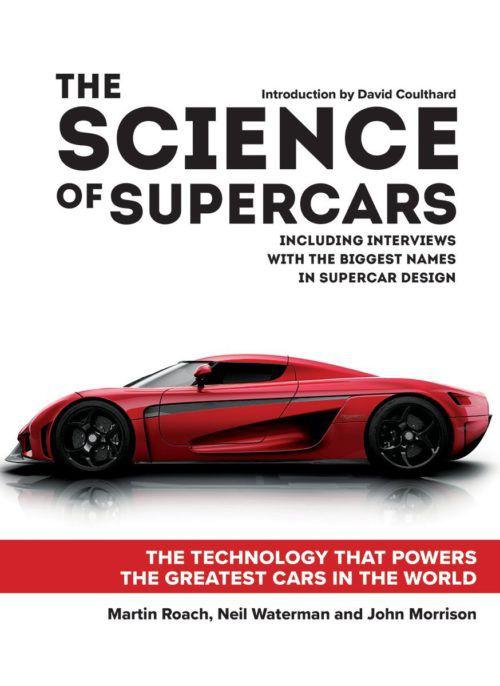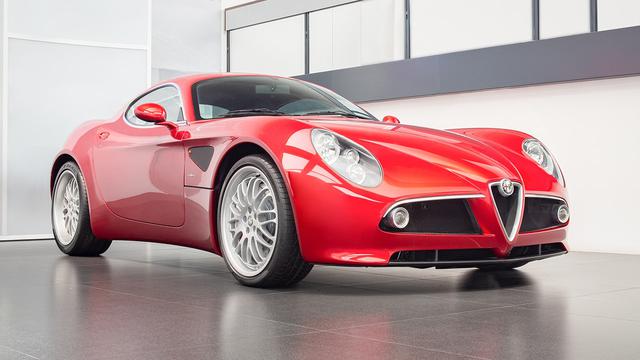Automoblog Book Garage: The Science of Supercars
"The Science of Supercars" is a thought-provoking observation of our dream car.
Our Book Garage series showcases what every enthusiast should add to their library.
Images taken from The Science of Supercars: The Technology that Powers the Greatest Cars in the World, with permission from Firefly Books Ltd.
Authors
Martin Roach, Neil Waterman, John Morrison
publisher
Firefly Books
isbn
978-0228100904
where to get it
Amazon
If you only paid attention to the photography and the layout, it would be easy to mistake The Science of Supercars as a coffee table book, even though it’s the size of an iPad. But it is much more than a display book with pretty pictures. The Science of Supercars is a comprehensive look at how we got here.
“Here,” in case you were wondering, is a place where things like the Bugatti Chiron and Koenigsegg Agera prowl the streets, let alone stuff like LaFerraris and Porsche 918s. It wasn’t all that long ago that a rather typical sports car – something like a 370Z or a Subaru BRZ – was considered well enough. What counts as a supercar these days would have counted as a race car engineer’s fever-dream just a few decades ago.
So, with that in mind, you might be asking how did we get here. Luckily enough, Martin Roach, Neil Waterman, and John Morrison have written The Science of Supercars to answer questions like that. And that’s a funny enough question to even pose, because, really, how did we get here?
A Better Way To Get Around
The Science of Supercars: For All Levels
So This Is How We Got Here . . .
The Science of Supercars: Chapter List
About The Authors
A Better Way To Get Around
The Science of Supercars thankfully starts out at the very beginning, back when cars were literally a new idea over a century ago. Automotive designers like Karl Benz and Henry Ford didn’t start by saying, “We need a car that puts out over 1,000 horsepower, and has 18 radiators, all-wheel drive, and is made from composites!” No, back then, they just wanted a better way to get around than horse-drawn carriages.
In a lot of ways, the answer to “how we got here” is a simple and natural one: Engineers. See, engineers will go out and solve a problem, but then, 99.9 percent of them will not leave well enough alone. Oh no. Almost as soon as they are finished (and about half the time, even before they’re finished) a “normal” engineer is going to say, “I know how to make it better.”
That natural tendency of engineers is how an automaker’s response to a competitor usually becomes “We can do better than that!” And that’s how we get to the point of Chirons and LaFerraris.

The Science of Supercars: For All Levels
Messrs. Roach, Waterman, and Morrison take us down this storied path, and they do a very good job of it. The Science of Supercars is neither tech heavy nor is it all a breathless history lesson. It’s a rather nice blend of both with integrated sidebars about certain bits of necessary tech information and racing know-how.
The Science of Supercars is nicely photographed and also nicely supplemented with technical drawings, showing off how various components and subsystems of these cars work. Sure, for a lot of us gearheads, this covers well-trodden ground. We know how the four-cycle
engine works, but if you’re new to this or it’s been a long time, it’s a welcome refresher. The Science of Supercars straddles a comfortable middle ground that works for readers of all levels of experience.From The Science of Supercars: The Technology that Powers the Greatest Cars in the World, published by Firefly Books Ltd. Photo: Porsche AG.
So This Is How We Got Here . . .
The book plays out in a linear, chronological fashion. Car makers are just trying to get engines that’ll put out enough grunt, and the next thing you know, we’re deep into the woods about engine placement, polar moments of inertia, aerodynamics, semi-automatic gearboxes, turbos, hybrids, and even how fashion impacts a car’s design.
All of this follows with a smattering of interviews with the likes of Adrian Newey, legendary British Formula One engineer; Dr. Wolfgang Schrieber, Chief Engineer of the Bugatti Veyron; and Gordon Murray, designer of the McLaren F1.
In other words, The Science of Supercars is a good read. It will make a fine addition to your automotive library. And the book will help you understand how we went from horse and buggy, to the incredible machines contained within its pages.
Tony Borroz has spent his entire life racing antique and sports cars. He is the author of Bricks & Bones: The Endearing Legacy and Nitty-Gritty Phenomenon of The Indy 500, available in paperback or Kindle format. Follow his work on Twitter: @TonyBorroz.
The Science of Supercars: Chapter List
1. The Thirst for Power: The internal combustion engine and the early days of speed. 2. Style Versus Substance: Next steps, and the birth of aerodynamics. 3. Emerging Technologies: The mechanics of war drive the birth of the supercar. 4. Configuration: The Miura, the E-Type and the dawn of the modern age. 5. The Science of Theater: Fashion and styling take center stage. 6. The Turbo Years: The Porsche Turbo and the rebirth of supercar science. 7. All-Wheel drive: Power or technology: how designers keep the cars on the road. 8. Composites: The McLaren F1 and its technological legacy. 9. Emerging Aero: Understanding the complex art of aerodynamics. 10. Going to the Opera: The remarkable science behind the Bugatti Veyron. 11. The Holy Trinity: Hybrid tech ushers in a new kind of supercar. 12. The Future: The technology on the verge of reshaping the landscape.
Hardcover: 224 pages
Publisher: Firefly Books (September 14, 2018)
Language: English
ISBN-10: 0228100909
ISBN-13: 978-0228100904
Product Dimensions: 7.5 x 0.8 x 9.8 inches
Shipping Weight: 2 lbs.
Where To Buy: Amazon
About The Authors
Martin Roach is a best-selling author of a number of high-profile books about supercars. Neil Waterman has spent 35 years working in the highest levels of Motorsport. John Morrison has over five decades of experience as a racing driver, including winning the Daytona 24 and competing in the Le Mans 24-Hour race.
Gallery photos: Mercedes-Benz Patent Wagon/Daimler AG, Mercedes-Benz Classic Archive (page 11); Mercedes Gull Wing/Daimler AG, May Syders-Benz Classic Archives (page 49); Bugatti Veyron/Bugatti Auto SAS (page 141); Porsche 918 bonnet/Porsche AG (page 179); McLaren F1 / McLaren Automotive Co., Ltd. .
-
Latest
 Official: Audi launches RS3 Hot Hatch
Official: Audi launches RS3 Hot HatchThis is official news-Audi RS 3 Sportback exists. Audi's dramatic rise in the past few years is shocking. Fortunately, it has also spawned many new cars tailored for enthusiasts.Audi has paid particul...
-
Next
 What does the Alfa Romeo warranty cover? (2021)
What does the Alfa Romeo warranty cover? (2021)Alfa Romeo warranty comes with some additional benefits.Alfa Romeo combines its powertrain and bumper-to-bumper coverage into one Basic Limited Warranty.Based on Alfa Romeo’s reliability reputation, i...
